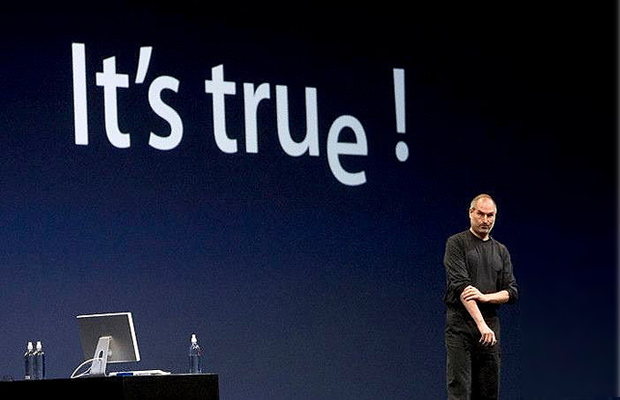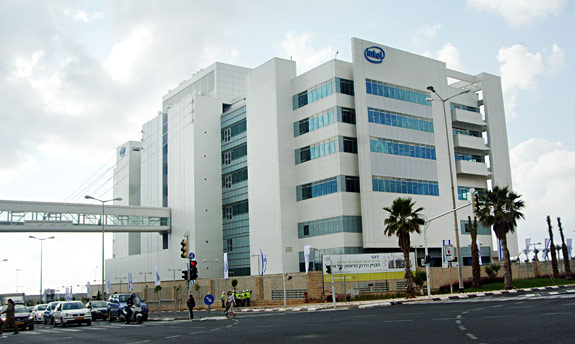44th anniversary, as well as other interesting letters and numbers from the life of Intel

Just 2 weeks ago, Intel celebrated its 44th birthday. The date, of course, is not anniversary, but too beautiful to just pass by. And we decided not to go through, but to bring a few more letters and numbers telling about the past and present of Intel - especially since the numbers brought her fame more than anyone else. Although successful letters, of course, also came across.
Past
On July 18, 1968, Intel itself appeared by the forces of its founding fathers: Robert Noyce, Gordon Moore and Andy Grove who joined them. Curiously, all three were production specialists, not cybernetic. In his book “Only the Paranoid Survive”, Grove writes that “he does not feel confident in the issues of computer architecture”. Well, but in terms of management decision-making, Andy was on top.
Fathers, quite satisfied with their brainchild. 1978
')
On November 15, 1971, the first commercial single-chip Intel 4004 processor appeared. We will not describe this event - it is already included in all textbooks. We only note that initially the processors were not a priority for Intel, it was supposed to deal primarily with memory modules. However, competition in the memory market forced us to look for new development vectors, and it was then that Busicom appeared with its calculator and Ted Hoff with a brilliant idea.
On October 17, 1985, Intel officially unveiled the first 32-bit processor from the 80386 kind. We missed the 8-and 16-bit era again, because we are writing not a textbook, but a non-anniversary, but festive speech. i386 went down in history as one of the longest playing devices in digital technology: its release lasted for more than 20 years. Until now, it can be easily detected in industrial controllers and household appliances. Perhaps, except that only the VAZ "Niva" can compete with 80386 for technological longevity.

i386 with coprocessor. Remember the story,% habrauser%!
Let's pay attention now to Intel software. Although the name of this product is purely alphabetic, its work is directly related to numbers. On February 17, 1998, Intel Iometer , perhaps the most well-known synthetic performance test of the network and disk subsystems, was introduced to the Intel Developer Forum participants. Subsequently, Intel transferred Iometer to the care of the Open Source community, and today it has been enjoyed by system administrators for several generations.
Unlike processors, chipsets are rarely included in the annals of history, because of their complementarity and attendance. Still, one of the Intel products managed to get there. in April 1998, official sales of motherboards based on the Intel 440BX chipset began - perhaps the most famous of the chipset kind. Naturally, the glory got 440VH not just like that, but for reliability and excellent consumer characteristics. By the way, the life of the chipset has also been long, it has gone through several generations of processors and still works in some computers.
And finally, an event that is not directly related to any Intel product, but has become a milestone in digital history. The parallel universe has returned to our dimension: On June 6, 2005, Steve Jobs announced his intention to transfer Apple computers to the Intel platform. He has kept his promise, as you know. The news became a sensation, meanwhile, long before that, all new MacOS releases were compiled, including for Intel. The solution was waiting in the wings; I think he has more advantages than disadvantages.

Steve Jobs is serious, but believes in success
The present
Well, now a few numbers and letters characterizing today's Intel. They are not so monumental, but they give an idea of how and how the company lives now.- Intel occupies 579 buildings in 166 locations in 63 countries
- Employs approximately 100,000 people
- Its employees include 80,000 technical workers, 10,400 masters, 5,200 doctors of science, 4,000 with an MBA
- In 2011, the company's net profit amounted to 12.9 billion dollars, which exceeds the 2010 figures by 13%. Annual revenue increased by 24% to $ 54 billion.
- Intel has more than 30 research centers and laboratories in Europe
- In 2011, Intel entered the top five independent research-competition "Best Employers of Russia".

Intel Inside. Office in Haifa, Israel
And in conclusion, we will be a little bit proud of Intel's awards lately:
- 100 most responsible corporations in the world, 18th place - Corporate Knights & GRNI
- Included in the Dow Jones Sustainability Index - Dow Jones Sustainability Index
- Companies admiring the world, 36th place - Fortune Magazine
- Top 100 Companies to Work, 46th Place - Fortune Magazine
- Top World Brands, 7th Place - Interbrand / Wall Street Journal
- The most ethical companies in the world - Ethisphere
- Top 100 Companies - Working Mother
- Top 100 Companies # 36 - Fortune.com
- Top Companies List - Diversity / Careers Magazine
- The most respected brands, 9th place - Forbes.com / Reputation Institute
- Top 100 Corporate Citizens, 3rd Place - Corporate Responsibility Magazine
- The largest most respected companies in the world, 17th place - Barron's
- 50 most attractive employers, third year in a row in the ranking - Universum
Next year will be much more jubilee for Intel, which means there will be another good reason to return to the topic of interesting letters and numbers.
Source: https://habr.com/ru/post/148814/
All Articles